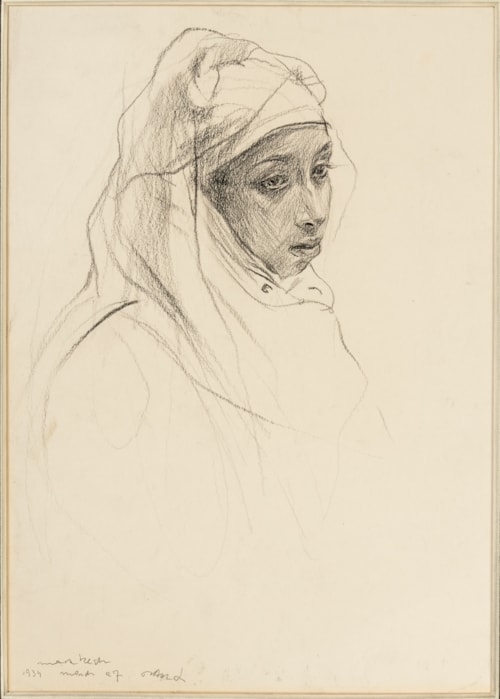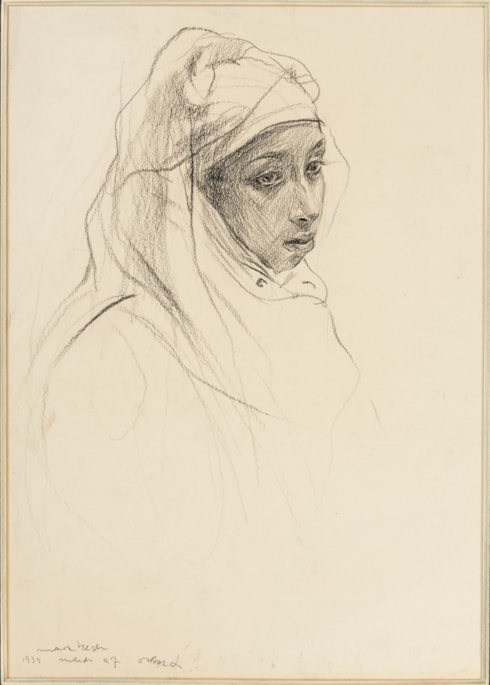
Philip Alexius DE LASZLO
Budapest 1869 - London 1937
Biography
The Hungarian painter Fülöp László began his career initially as a genre painter but soon became known in particular as a gifted portraitist. By the turn of the century, at the age of thirty, he was firmly established as the most successful painter in Hungary, earning a fortune from his work and building a large castle-like villa and studio in the centre of Budapest. A few years after his marriage in 1900 to Lucy Guinness, an Anglo-Irish socialite, László left Budapest to settle first in Vienna and then, in 1907, in England. His first solo exhibition in London, showcasing fifty recent portraits, took place that year at the Fine Art Society, while the same time a large retrospective exhibition of nearly a hundred works was shown in Budapest. As the artist later recalled of his decision to settle in England, he believed that ‘here indeed I could make my life, in this home of the art to which I was devoted, and that I might aspire to become a link, however humble, in the great chain of foreign artists who had been received and treated by England as her own sons.’ Anglicizing his first name to Philip, László almost immediately earned commissions from the King and Queen, and soon became the leading society portrait painter in Edwardian Britain, succeeding John Singer Sargent, who had largely given up portraiture in 1907. Ennobled by the Emperor Franz Joseph of Austria in 1912, the artist thereafter was known as de László.
Much in demand as a portraitist, de László painted members of the Royal families of England, Germany, Spain, Austria, Greece and as far afield as Egypt and Japan, as well as numerous statesmen – including four American presidents – military officers, financiers, writers, academics, clerics and others, alongside countless members of the aristocracy of England, Europe and America. Indeed, it is thought that de László painted some five thousand portraits over the course of the fifty years of his career. As Richard Ormond has noted of de László and his predecessor Sargent, who retired from portrait painting the same year that the Hungarian artist arrived in London, ‘Both were cosmopolitan, international in outlook, and masters of high style and painterly panache…Portraits by Sargent and de László are marked by flowing brushwork and scintillating effects of light and colour that bring their subjects vividly to life. At the same time their sitters are invested with the aura of wealth and glamour, power and prestige, through the devices of grand design and pictorial invention.’
Although was naturalized as a British citizen just before the outbreak of the First World War, de László fell under suspicion and was briefly interned, leading to a nervous breakdown. Fully exonerated after the war, he soon returned to his previous level of success, and the 1920s and 1930s found de László at the peak of his fame and productivity. He also began to take holidays to Italy, the South of France, Egypt and North Africa, during which he produced a number of landscape studies. Although never a member of the Royal Academy, where he only occasionally showed his work, de László was appointed president of the Royal Society of British Artists in 1930, succeeding Walter Sickert. The artist remained hard at work, with numerous important commissions, right up until his death of a heart attack in 1937. After the Second World war, however, de László’s reputation fell into something close to obscurity. He was equally forgotten in his native Hungary, whose postwar Communist government had little regard for society portraiture, and the artist’s paintings in the national collections were relegated to storerooms.


